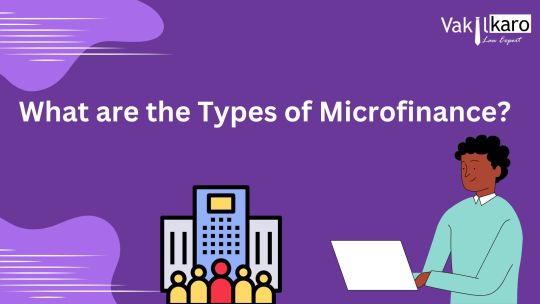#Microfinance Software
Explore tagged Tumblr posts
Text
Empowering Microfinance Institutions with the Leading Microfinance Software Solution
Integrated Microfinance Solutions (IMS) is a comprehensive and scalable platform built to streamline microfinance operations with accuracy and efficiency. Recognized as the Best Microfinance Software, IMS empowers institutions with automated processes, real-time monitoring, secure data management, and seamless integrations.
From Aadhaar verification to geo-tagging and biometric authentication, IMS covers every essential feature to simplify lending and customer management. Designed to support growth and compliance, it offers robust tools that help organizations serve communities better and faster. Whether you're managing loans, repayments, or reporting, our Microfinance Software Solutions are tailored for operational excellence. Choose IMS for a reliable and intelligent Microfinance Software that drives lasting impact and financial inclusion.
Visit our website at: https://vexilinfotech.com/microfinance-software
#Microfinance Software#Best Microfinance Software#Microfinance Software Solutions#Integrated Microfinance Solution
0 notes
Text
#microfinance software#microfinance#microfinancesoftware#best microfinance software in kolkata#best microfinance software in tamil nadu#online best microfinance software in west bengal
0 notes
Text
What are the basic features of microfinance

Introduction:
Microfinance plays a crucial role in providing financial services to individuals who are typically excluded from traditional banking systems. It aims to empower entrepreneurs, especially those in low-income communities, by offering them access to credit, savings, and other financial instruments. This article will delve into the basic features of microfinance and shed light on the process of Section 8 Microfinance Company Registration and What are the basic features of microfinance .
Basic Features of Microfinance:
Financial Inclusion: Microfinance focuses on reaching out to individuals who lack access to formal banking channels. This includes marginalized communities, small business owners, and individuals with low income.
Small Loan Amounts: One distinctive feature of microfinance is the provision of small loan amounts. These loans are designed to meet the modest financial needs of borrowers, enabling them to start or expand small businesses.
Collateral-Free Loans: Traditional banking often requires collateral for loan approval. Microfinance, however, typically offers collateral-free loans, making it more accessible to individuals who lack significant assets.
Group Lending: Microfinance often employs a group lending model where individuals form small groups. Each member is jointly responsible for the repayment of loans, creating a support system and fostering a sense of community responsibility.
Interest Rates: Microfinance institutions set interest rates that are reasonable and sustainable for both the institution and the borrower. The goal is to ensure affordability for the borrowers while covering operational costs.
Savings and Insurance: Microfinance institutions not only provide credit but also encourage savings. Additionally, some institutions offer micro-insurance products to protect clients against unforeseen events.
Section 8 Microfinance Company Registration:
Legal Structure: Section 8 of the Companies Act in many jurisdictions allows for the formation of non-profit organizations with the primary objective of promoting commerce, art, science, sports, education, research, social welfare, religion, charity, protection of the environment, or any other charitable objective.
Microfinance Focus: Companies registered under Section 8 with a focus on microfinance adhere to the legal framework while aligning their activities with the mission of promoting financial inclusion and economic empowerment.
Regulatory Compliance: Section 8 Microfinance Company Registration involves adhering to regulatory requirements set by the relevant authorities. This ensures that the microfinance institution operates within the legal framework and maintains transparency in its financial dealings.
Social Impact Reporting: Section 8 companies engaged in microfinance often emphasize social impact reporting, highlighting their contributions to poverty alleviation, entrepreneurship development, and community upliftment.
Conclusion:
Understanding the basic features of microfinance, coupled with the regulatory aspects of Section 8 Microfinance Company Registration, is essential for those aiming to establish or engage with microfinance institutions. By promoting financial inclusion and adopting a socially responsible approach, microfinance plays a pivotal role in fostering economic development and empowerment at the grassroots level.
#microfinance#microfinance software features#microfinance software#benefits of microfinance#parallex microfinance bank#client of microfinance#history of microfinance#md parallex microfinance bank#micro finance software features#online micro finance software features#detail about microfinance software#about microfinance software#online microfinance software#learn about microfinance software#online micro loan software features#microfinance software provider
0 notes
Text
Top Microfinance Management Software Development Companies in Delhi — How Renew J Software Solution Sets the Benchmark
In India’s capital city, where the digital world is rapidly evolving, microfinance institutions (MFIs) are increasingly dependent on technology for better operations and customer handling. Choosing the right technology partner is highly important, especially in a country where choices abound. Suppose you are looking for the Best microfinance software company in Delhi. In that case, you’ve come to the right place: Renew J Software Solution Pvt. Ltd. — a name that has earned trust and is known for quality in the financial technology sector.
Renew J Software Solution Pvt. Ltd. is a renowned Delhi-based software company. It offers extremely customizable, secure, and scalable microfinance software specifically tailored for the requirements of NBFCs, cooperative societies, and micro-lending agencies. With over a decade of experience in the market, the company has become one of the IT software companies in Delhi NCR that is renowned for innovativeness and reliability.
Why Microfinance Software is Needed Today: With the need for transparency, compliance, and automation increasing in the micro-lending segment, paper-based or legacy systems no longer suffice. Organizations require end-to-end solutions that cover customer onboarding, loan origination, EMI tracking, collection reports, and regulatory compliance — all through a single, integrated platform.
Renew J Software Solution Pvt. Ltd. is a New Delhi-based Indian software company. They are unique in their software for microfinance management, which is offered with advanced features like real-time reporting, cloud connectivity, mobile app integration, and AI-based decision-making. This makes microfinance institutions perform optimally in the market.

What Sets Renew J Apart?
Unlike most of the other IT software companies in Delhi, Renew J Software Solution Pvt. Ltd. does not resell off-the-shelf products. Their talented developers collaborate with clients to address their issues and develop solutions that are tailored to their requirements. Whether you require an entire microfinance system or a module integrated into the systems you currently have, Renew J is the flexibility and expertise you need. Renew J is among the leading software companies in Delhi. They even enjoy a plus point in developing MLM software. If your microfinance company is run on multi-level commissions or referral schemes, its robust MLM software services in Delhi can simplify the task.
Growing With Delhi NCR’s Digital Transformation: The National Capital Region is now a center of digital innovation. Organizations willing to become digital usually seek a reliable software development company in Delhi NCR that can satisfy evolving industry demands. Renew J Software Solution Pvt. Ltd. is the ideal companion for such a transformation process, offering not just products but also long-term support-based relationships, updates, and client-oriented development. Most customers suggest Renew J as one of the IT software companies in Delhi NCR. They love the transparent pricing, excellent customer support, and robust deployment process. Conclusion:
If you want the best software company in Delhi for microfinance or fintech software development, you would look no further than Renew J Software Solution Pvt. Ltd. They possess great understanding of the financial services industry, a guarantee to deliver quality, and advanced technology that makes them the best in Delhi for companies seeking serious growth. As more businesses are focusing on enhancing their microfinance business, reaching out to an experienced software development company in Delhi like Renew J Software Solution Pvt. Ltd. is not only a smart move — it’s a strategic advantage.
#Top microfinance software companies in Delhi#Microfinance software development Delhi#Best microfinance software company in Delhi#Microfinance software providers in Delhi NCR#Microfinance software development company Delhi#Software development company in Delhi#MLM Software company in Delhi#Best software company in Delhi
0 notes
Text
Smart Tech for Small Finance: The Future of Microfinance is Now

Microfinance institutions today are no longer bound by manual records or outdated systems. With the rise of advanced microfinance software solutions, rural lending is getting smarter, faster, and far more inclusive. From loan origination and KYC to credit scoring and collections—everything is now digitized, secure, and scalable.
For MFIs, this isn’t just a digital upgrade—it’s a mission enabler. Software platforms are not only improving operational efficiency but also expanding the reach of micro-credit to remote areas with real-time analytics and mobile-ready tools.
In a world where every second counts and every rupee matters, the right microfinance software is your edge.
#microfinance software solutions#financial services technology#artificial intelligence#banking software development#digital transformation in banking and finance
1 note
·
View note
Text
Smart Field Force Management for Banks & Financial FirmsAsti Infotech offers cutting-edge field force management solutions tailored for banks and financial institutions. Our platform ensures complete visibility, real-time tracking, and seamless task management for field agents, helping your organization stay compliant, efficient, and customer-focused. With rising regulatory requirements and increasing customer expectations, banks and NBFCs need smart tools to streamline operations and reduce risks. Our solution helps financial organizations monitor employee movement, schedule and assign tasks, verify visit authenticity through GPS and timestamp data, and generate insightful reports to optimize performance. Whether it’s loan collections, field verifications, or sales visits, our system supports secure, trackable, and automated workflows—reducing manual errors and improving accountability. Asti’s platform is scalable, cloud-based, and easy to integrate with your existing systems. Empower your team with a mobile app for on-the-go task updates, attendance marking, geo-fencing, and instant communication. Enhance customer trust with faster response times and verified interactions. Choose Asti Infotech to bring greater transparency, operational excellence, and cost-efficiency to your banking field operations. Perfect for banks, NBFCs, microfinance institutions, and fintech service providers.
#Field force management software for financial institutions#Best tracking solution for banking field executives#Task management system for NBFC field agents#Automated field operations for banks and microfinance#Mobile app for loan recovery agents tracking
0 notes
Text
1 note
·
View note
Text
#microfinance software solution#best microfinance software#microfinance software#microfinance software in india#microfinance software in lucknow
0 notes
Text
Revamp Financial Services with the Latest NBFC Software in India
0 notes
Text
What are the types of microfinance?

Introduction: Microfinance plays a pivotal role in fostering financial inclusion by providing access to financial services to individuals who are traditionally excluded from the formal banking sector. As the demand for microfinance services grows, various types of microfinance institutions have emerged to cater to diverse needs. Additionally, the regulatory landscape has evolved, leading to the establishment of entities like Section 8 Microfinance Companies. In this article, we will delve into What are the types of microfinance? and shed light on the importance of Section 8 Microfinance Company Registration.
Types of Microfinance:
Microcredit Institutions: Microcredit institutions primarily focus on providing small loans to entrepreneurs and individuals in need of capital to start or expand small businesses. These loans often help in income-generating activities and contribute to poverty alleviation.
Microsavings Institutions: Microsavings institutions encourage individuals, especially those from low-income backgrounds, to save small amounts regularly. These institutions offer a secure and accessible platform for individuals to build savings, fostering financial stability and resilience.
Microinsurance Providers: Microinsurance aims to protect low-income individuals against various risks, including health issues, natural disasters, and crop failure. Microinsurance providers offer affordable insurance products tailored to the specific needs of their target demographic.
Development Banks: Some microfinance institutions operate as development banks, providing a range of financial services, including loans, savings, and insurance. These institutions often work towards broader economic development goals in addition to financial inclusion.
Cooperative Societies: Microfinance cooperative societies are member-owned organizations that offer financial services to their members. These societies operate on a cooperative basis, with members having a say in the decision-making process.
Significance of Section 8 Microfinance Company Registration:
Section 8 Microfinance Companies are entities registered under Section 8 of the Companies Act, which pertains to non-profit organizations. The significance of Section 8 registration lies in the following aspects:
Legal Recognition: Section 8 registration provides legal recognition to microfinance entities, enabling them to operate transparently and gain the trust of stakeholders.
Tax Exemptions: Microfinance institutions registered under Section 8 may be eligible for tax exemptions, allowing them to allocate more resources towards their social and financial inclusion objectives.
Credibility and Accountability: Section 8 registration enhances the credibility of microfinance institutions, as it involves compliance with regulatory standards. This accountability fosters confidence among donors, investors, and beneficiaries.
Social Impact Focus: Section 8 registration reinforces the commitment of microfinance institutions to social impact, as these entities are mandated to use their profits for the promotion of their objectives rather than distributing dividends.
Conclusion: Understanding the various types of microfinance institutions is crucial for comprehending the diverse approaches employed to address financial inclusion. Additionally, the significance of Section 8 Microfinance Company Registration underscores the importance of legal recognition and accountability in the microfinance sector. By exploring these aspects, stakeholders can contribute to the sustainable development of microfinance and its positive impact on communities worldwide.
#microfinance#benefits of microfinance#what is microfinance#microfinance explained#microfinance software#future of microfinance#client of microfinance#history of microfinance#history of microfinance in india#microfinance company#microfinance company registration process#microfinance software in kolkata#microfinance software demo#free microfinance software#best microfinance software#microfinance software in rajasthan#microfinance software features
0 notes
Text
Microfinance Software for Effective and Efficient Operations

Genius Technology, a reputed software development company in Kolkata, offers a comprehensive microfinance software solution that can help you streamline your operations, improve efficiency, and reduce costs. Our microfinance software is designed to meet the specific needs of microfinance institutions (MFIs) of all sizes, and it is used by MFIs across India and other countries.
We are so confident that you will be satisfied with our microfinance software that we offer a 100% satisfaction guarantee.
For more information, Visit our official websitewww.geniustechnoindia.com/microfinance-software
1 note
·
View note
Text
Strengthening Microfinance Institutions Through Effective Training of Staff

The success of microfinance hinges on people, making the training of staff in microfinance sector one of the most strategic areas of investment. Microfinance institutions (MFIs) serve millions of financially excluded individuals, and the quality of service they deliver depends largely on the skills and knowledge of their staff. Whether dealing with small entrepreneurs, farmers, or women-led households, trained personnel are key to enabling financial inclusion, maintaining client trust, and ensuring long-term sustainability.
Why Training is Crucial in Microfinance
MFIs operate in diverse, often underserved areas, where staff are expected to educate, guide, and support clients through their financial journeys. Training ensures that they are equipped to handle this responsibility. Here’s why training matters:
Service Quality Improvement: Well-trained staff enhance client experiences by providing accurate information and empathetic support.
Credit Risk Management: Proper training in loan appraisal techniques helps reduce defaults and improves portfolio quality.
Technology Adaptation: Staff learn to use digital tools and software for faster, error-free operations.
Legal Compliance: Understanding the regulatory environment reduces risks of non-compliance.
Field Confidence: Trained employees are more confident and consistent in their approach, especially in rural outreach.
What Should Microfinance Staff Training Include?
A strong training framework covers not just technical skills but also interpersonal and ethical dimensions. Essential training topics include:
Loan Product Education: Understanding features, eligibility, interest structures, and repayment norms.
Client Communication: Teaching staff to listen actively, explain terms clearly, and maintain respectful client interactions.
Collections & Recovery: Managing follow-ups and guiding borrowers in repayment without coercion.
MIS and Digital Reporting Tools: Familiarity with software used for customer onboarding, data entry, and reporting.
Responsible Lending: Promoting ethical behavior and ensuring clients are not overburdened with loans.
Barriers to Training in the Microfinance Sector
Despite its importance, the implementation of training faces several hurdles:
Budgetary Constraints: Especially for smaller MFIs with limited resources.
Geographical Spread: Branches in remote areas are harder to reach with in-person sessions.
Language Diversity: Training material must be customized to suit regional dialects and literacy levels.
High Staff Turnover: Leads to frequent onboarding needs and training repetition.
Solutions include investing in mobile-based learning, multilingual video content, and local facilitators who understand regional contexts.
FAQs – Training of Staff in Microfinance Sector
Q1. How does training impact microfinance performance? It improves client satisfaction, reduces defaults, ensures compliance, and boosts employee retention.
Q2. What are cost-effective training methods? E-learning modules, mobile training apps, and peer-to-peer learning help cut costs without compromising quality.
Q3. Should training be one-time or ongoing? Training should be continuous, with regular refreshers and updates as policies or products change.
Q4. How do MFIs manage training across remote branches? They use a combination of digital training platforms and local trainers to ensure accessibility.
Conclusion
In the rapidly expanding world of financial inclusion, training of staff in microfinance sector is a powerful enabler of efficiency, ethics, and growth. Institutions that prioritize learning empower their employees to make smarter decisions, reduce risk, and build lasting relationships with clients. As the microfinance industry continues to scale and digitize, a trained and agile workforce will be the cornerstone of its success.
#Training of staff in microfinance sector#Microfinance employee training#Microfinance staff development#Financial inclusion training#Microfinance institutions India
2 notes
·
View notes
Text
The impact of sustainability in fintech: reflections from the summit

In recent years, the Fintech industry has witnessed a paradigm shift towards sustainability, with an increasing emphasis on integrating environmental, social, and governance (ESG) factors into financial decision-making processes. This transformative trend took center stage at the latest Fintech Summit, where industry leaders converged to explore the intersection of sustainability and financial technology. Among the prominent voices shaping this discourse was Xettle Technologies, a trailblazer in Fintech software solutions, whose commitment to sustainability is driving innovation and reshaping the future of finance.
Against the backdrop of global challenges such as climate change, resource depletion, and social inequality, the imperative for sustainable finance has never been greater. The Fintech Summit provided a platform for thought leaders to reflect on the role of technology in advancing sustainability goals and fostering a more resilient and equitable financial ecosystem.
At the heart of the discussions was the recognition that sustainability is not just a moral imperative but also a strategic imperative for Fintech firms. By integrating ESG considerations into their operations, products, and services, Fintech companies can mitigate risks, enhance resilience, and unlock new opportunities for growth and value creation. Xettle Technologies’ representatives underscored the company’s commitment to sustainability, highlighting how it is embedded in the company’s culture, innovation agenda, and business strategy.
One of the key themes that emerged from the summit was the role of Fintech in driving sustainable investment. Through innovative solutions such as green bonds, impact investing platforms, and ESG scoring algorithms, Fintech firms are empowering investors to allocate capital towards environmentally and socially responsible projects and companies. Xettle Technologies showcased its suite of Fintech software solutions designed to facilitate sustainable investing, enabling financial institutions and investors to align their portfolios with their values and sustainability objectives.
Moreover, the summit explored the transformative potential of blockchain technology in advancing sustainability goals. By enhancing transparency, traceability, and accountability in supply chains, blockchain can help address issues such as deforestation, forced labor, and conflict minerals. Xettle Technologies’ experts elaborated on the company’s blockchain-based solutions for supply chain finance and sustainability reporting, emphasizing their role in promoting ethical sourcing, responsible production, and fair labor practices.
In addition to sustainable investing and supply chain transparency, the summit delved into the role of Fintech in promoting financial inclusion and resilience. By leveraging technology and data analytics, Fintech firms can expand access to financial services for underserved populations, empower small and medium-sized enterprises (SMEs), and build more inclusive and resilient communities. Xettle Technologies’ representatives shared insights into the company’s initiatives to support financial inclusion through digital payments, microfinance, and alternative credit scoring models.
Furthermore, the summit highlighted the importance of collaboration and partnership in advancing sustainability goals. Recognizing the interconnected nature of sustainability challenges, participants underscored the need for cross-sectoral collaboration between Fintech firms, financial institutions, governments, civil society, and academia. Xettle Technologies reiterated its commitment to collaboration, emphasizing its partnerships with industry stakeholders to drive collective action and scale impact.
Looking ahead, the future of sustainability in Fintech appears promising yet complex. As Fintech firms continue to innovate and disrupt traditional financial systems, they must prioritize sustainability as a core principle and driver of value creation. Xettle Technologies’ visionaries reiterated their commitment to sustainability, pledging to harness the power of technology to build a more sustainable, inclusive, and resilient financial ecosystem for future generations.
In conclusion, the Fintech Summit served as a catalyst for reflection and action on the role of sustainability in shaping the future of finance. From sustainable investing and supply chain transparency to financial inclusion and resilience, Fintech has the potential to drive positive change and advance sustainability goals on a global scale. Xettle Technologies’ leadership in integrating sustainability into its Fintech solutions exemplifies its dedication to driving innovation and creating shared value for society and the planet. As the industry continues to evolve, collaboration, innovation, and sustainability will be key drivers of success in building a more sustainable and resilient financial future.
2 notes
·
View notes
Text
Smart Microfinance Software by Vexil Infotech
Discover the power of smart microfinance management with Vexil Infotech. Our software solutions are designed to enhance operational efficiency, reduce risks, and empower microfinance institutions to make a lasting difference in the lives of their clients. Choose Vexil Infotech as your Microfinance Software partner and embark on a journey of digital transformation. Our advanced tools and expertise pave the way for smart, efficient, and inclusive financial solutions, positioning your institution at the forefront of microfinance excellence.
#microfinance software solution#best microfinance software#microfinance software#microfinance software in india#microfinance software in lucknow
0 notes
Text

Advanced Microfinance Software Features
#microfinance#software#microfinance software#softwaredemo#best microfinance software in kolkata#online best microfinance software in west bengal#microfinancesoftware
0 notes
Text
How do I start a microfinance company in Ghaziabad?

Starting a Section 8 microfinance company in Ghaziabad, or anywhere in India, involves several steps and requires compliance with regulatory requirements. Here’s a general guide to help you get started:
Market Research:
Conduct thorough market research to understand the demand for microfinance services in Ghaziabad.
Identify your target customers, their needs, and the competition in the area.
Business Plan:
Develop a detailed business plan outlining your company’s objectives, target market, financial projections, and operational strategies.
Include information on how you plan to manage risks associated with microfinance lending.
Legal Structure:
Decide on the legal structure of your company (e.g., partnership, private limited company).
Consult with a legal advisor to understand the regulatory requirements and compliance needed for setting up a microfinance company in India.
Registration and Licensing:
Register your company with the Registrar of Companies (ROC) under the Companies Act, 2013.
Obtain necessary licenses and approvals from the Reserve Bank of India (RBI) and other relevant regulatory bodies like the National Housing Bank (NHB) if you plan to offer housing microfinance.
Capital Requirement:
Determine the capital requirement for your microfinance company. RBI has prescribed minimum capital requirements for non-banking financial companies (NBFCs) engaged in microfinance.
Arrange the necessary capital through equity, debt, or a combination of both.
Operational Setup:
Set up your office with the required infrastructure, including technology platforms for loan processing, credit assessment, and customer management.
Hire qualified staff with experience in microfinance, credit assessment, and customer service.
Risk Management:
Develop robust risk management policies and procedures to assess and mitigate the risks associated with microfinance lending.
Implement proper systems for loan monitoring, repayment tracking, and collection.
Compliance and Reporting:
Ensure ongoing compliance with regulatory requirements and reporting obligations as prescribed by RBI and other regulatory bodies.
Maintain accurate records and financial statements to facilitate regulatory audits and inspections.
Marketing and Outreach:
Develop a marketing strategy to promote your microfinance services and reach out to potential customers.
Build partnerships with local organizations, community groups, and government agencies to expand your outreach and promote financial inclusion.
Launch and Operations:
Once all regulatory approvals are in place, launch your microfinance operations in Ghaziabad.
Monitor the performance of your portfolio, manage customer relationships, and continuously refine your business strategies based on market feedback and operational insights.
Why Choose Vakilkaro for Section 8 microfinance company registration?
Looking to register a Section 8 microfinance company? Choose Vakilkaro for hassle-free and expert assistance. With our experienced team, we ensure a smooth registration process tailored to your needs. Trust Vakilkaro for reliable and efficient Section 8 microfinance company registration. Reach out to us today on this number: 9828123489!
#microfinance company#what is the job of field officer in microfinance company#best microfinance company#microfinance loan process#how to start microfinance business#microfinance job in bihar#microfinance job in mp#microfinance in india#best software company ghaziabad#microfinance kya hai#microfinance in hindi#nidhi company ghaziabad#microfinance company me field officer ka kam kya hota h#microfinance business model in india#nidhi software in ghaziabad
0 notes